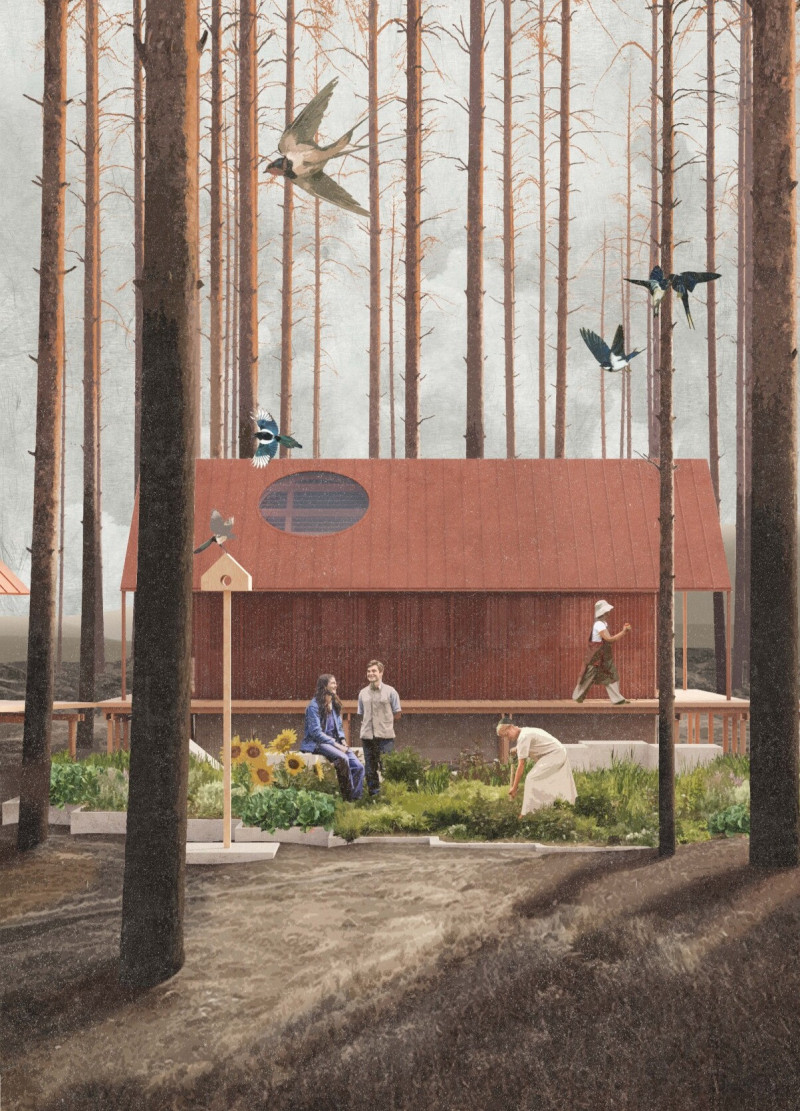5 key facts about this project
At its core, the architecture of this project represents a commitment to functionality and aesthetic simplicity. The overall design allows for a flexible use of space, accommodating various activities while fostering social interactions among its occupants. Large, open areas within the building encourage a fluid flow, facilitating connectivity between different zones, whether they be communal, work, or leisure spaces. This layout is intentional, designed to cater to the needs of a diverse demographic while prioritizing an inviting atmosphere.
The materials chosen for the construction play a crucial role in defining the project's character. Reinforced concrete provides the structural backbone, allowing for expansive interiors and open sightlines. Glass is extensively used to enhance transparency and natural light throughout the space, establishing a visual continuity with the outdoor landscape. This use of glass not only helps in reducing energy consumption but also creates an engaging environment that connects people with nature. Steel elements, strategically placed, contribute to the project's modern aesthetic while maintaining stability and strength.
Another significant aspect of the design is the incorporation of sustainable practices and materials. The use of locally sourced natural stone and sustainably harvested wood reflects a commitment to environmental responsibility. These materials not only enhance the tactile quality of the space but also support the local economy, emphasizing an awareness of context rather than solely focusing on aesthetics. Sustainable composite materials further reinforce this ecological mindset, paving the way for an environmentally friendly realization of modern architectural ideals.
When examining the building's spatial organization, several important components emerge. The entryway is designed to offer a welcoming ambiance, notwithstanding its grandeur. Visitors are greeted by high ceilings that create a sense of openness while framing views of the adjacent landscape, subtly encouraging exploration. Public areas are characterized by their flexible design, capable of adapting to various activities. These spaces are supported by thoughtful furnishings that enhance usability and foster social connections among users.
Private spaces are deliberately located to provide the necessary seclusion from high-traffic areas, ensuring a peaceful environment conducive to relaxation and concentration. The integration of rooftop gardens and terraces not only serves aesthetic purposes but also invites occupants to enjoy nature, further emphasizing the project's intent to weave together indoor and outdoor experiences. These spaces promote biodiversity and create opportunities for community engagement, aligning with contemporary trends in urban architecture.
Unique design approaches are evident throughout the project, distinguishing it from conventional architectural solutions. The careful selection of materials, attention to detail, and a profound understanding of the geographic context culminate in a building that is both functional and visually appealing. The project's design promotes a sense of place, connecting it to the cultural narratives of its location while addressing the various needs of its users.
The project's architectural plans and sections detail a coherent vision that enhances user experience while respecting the environment. Each design decision is intentional, showcasing a deep appreciation for the interplay between elements and their surroundings. By exploring the architectural designs and ideas presented in this project, readers can gain a richer understanding of how thoughtful architecture can shape our experiences and environments.
To appreciate the intricacies of this architectural endeavor, readers are encouraged to explore the detailed project presentation. By reviewing the architectural plans, sections, and overall design concepts, one can gain a deeper insight into the thoughtful considerations that make this project an exemplary model of modern architectural practice.


























